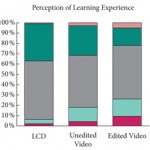Editorial: Do live case demonstrations have a future in surgical education?
The ever increasing desire for instant access to information is a reflection of our times facilitated by social networks and by video and information technology. Nowadays, sport events are dissected and quantified from every possible perspective. We know almost real-time any detail of a soccer match: how many miles each player runs, how many good or bad passages of play, how many faults and so on, including if needed the details of heart rate and weight loss. The same and even more is available for example in formula one racing. Theoretically the same could easily be applied to surgical performance and it is foreseeable it will be applied, as a self-performance improvement method and as a development of one of the most popular ‘scientific and educational’ activities during surgical meetings, live case demonstrations (LCDs). All this, together with simulation, could in the near future have a tremendous impact on surgical performance and training. Twitter and Instagram show the power of the immediate real-time diffusion of events, as condensed as possible, so that the tweet or the instantaneous image can be visible and digested without losing time. Video clips follow the same concept and certainly BJUI is pioneering the use of short surgical video clips that are easily accessible and usable at any spare time of a busy day.
The core issue about LCDs is that at present there is no solid scientific evidence of their educational value, and this is outlined in the paper by Elsamra et al. [1] published in this issue of BJUI, which commendably attempts to evaluate the educational benefit of LCDs in terms of perception, clearly not a very strong criterion.
Data about the outcomes of live surgery operations are scant. Clearly patient’s safety is the first goal of any surgical activity, and this applies to LCDs. As mentioned in the paper, the European Association of Urology (EAU) Executive felt the urgent need to establish procedures and regulations in order to endorse live surgery events. The reader can find all related information on the EAU website. These regulations are meant to be in the best interest of patients, surgeons and organisers. Among others, one important innovation is the requisite of a ‘patient advocate’ present during the LCD, being an experienced medical doctor, independent from the organising committee of the educational event, in charge of advising in case of unexpected events, which can endanger patient’s safety.
Moreover, the EAU has established a prospective database of all endorsed live surgery events. This will hopefully allow in a few years an answer, with solid data, to the question of whether an intervention performed during a live surgery event has the same outcome compared with the same intervention executed by the same surgeon in his usual environment. The more challenging goal is to quantify the educational value of a live surgical event and the jump from perception to scientific evidence is far from being an easy task.
Walter Artibani
Urologia – Azienda Ospedaliero Universitaria Integrata di Verona, Verona, Italy
Reference
- Elsamra SE, Fakhoury M, Motato H et al. The surgical spectacle: a survey of urologists viewing live case demonstrations. BJU Int 2014; 113: 674–678



